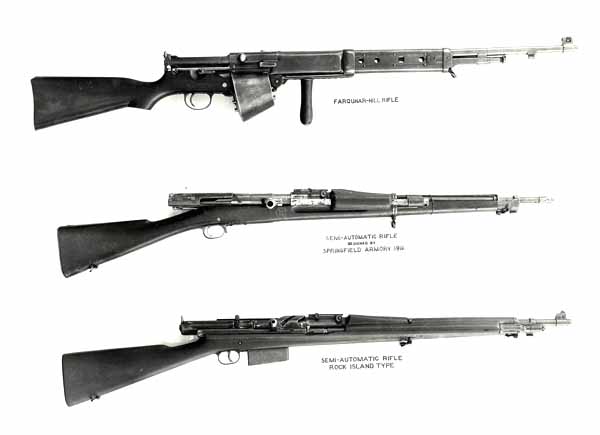- Joined
- 22 April 2012
- Messages
- 2,318
- Reaction score
- 1,838
This weapon has a very long history and participated in and failed multiple trials through 1908 to the early 1920s. it started life as a self loading rifle and appears to have evolved into a light machine gun. However the closes it got to entering service was 1918. After numerable trials a version with a 19 round drum magazine, metal hand guard and a vertical fore grip. Chambered in .303 this weapon was not unlike the Browning BAR in terms of basic configuration. I have seen claims that 100,000 were planned and that the National Rifle Factory Number 1 (formerly Standard Small Arms) was, in June 1918, ordered prepare to begin manufacturing components for the weapon. It seems that approximately £50,000 was spent on the programme but after the Armistice this was written off and production cancelled. The weapon did not fare well after the war and came third in the last set of trials in which it participated. There appears to have been a perception (likely true) that even once perfected it was still to complicated and fragile.
However this raises the first of two questions, surely the weapon must have been regarded as at least service ready for some use or it would not have entered production in 1918, after all the production capacity could be much better used on things other than dodgy rifles. Especially with the Lewis gun entering service in large numbers alongside the existing Vickers and Hotchkiss???
The second question that I have not been able to answer is exactly what it was, some sources say that it was a light machine gun and others say it was just self loading. Certainly the pre-war prototypes were semi-automatic but the use of a metal hand guard and 19 round drum magazine as well as the later participation in the post war light machine gun trials suggest the Pattern 1918 may have been a fully automatic weapon???
A couple of interesting pictures here: http://www.ww2talk.com/forum/weapons-technology-equipment/25068-british-semi-automatic-infantry-rifles-2.html
and here: http://books.google.co.uk/books?id=hLBTkNZ8U44C&printsec=frontcover&source=gbs_v2_summary_r&cad=0#v=onepage&q&f=false
However this raises the first of two questions, surely the weapon must have been regarded as at least service ready for some use or it would not have entered production in 1918, after all the production capacity could be much better used on things other than dodgy rifles. Especially with the Lewis gun entering service in large numbers alongside the existing Vickers and Hotchkiss???
The second question that I have not been able to answer is exactly what it was, some sources say that it was a light machine gun and others say it was just self loading. Certainly the pre-war prototypes were semi-automatic but the use of a metal hand guard and 19 round drum magazine as well as the later participation in the post war light machine gun trials suggest the Pattern 1918 may have been a fully automatic weapon???
A couple of interesting pictures here: http://www.ww2talk.com/forum/weapons-technology-equipment/25068-british-semi-automatic-infantry-rifles-2.html
and here: http://books.google.co.uk/books?id=hLBTkNZ8U44C&printsec=frontcover&source=gbs_v2_summary_r&cad=0#v=onepage&q&f=false

